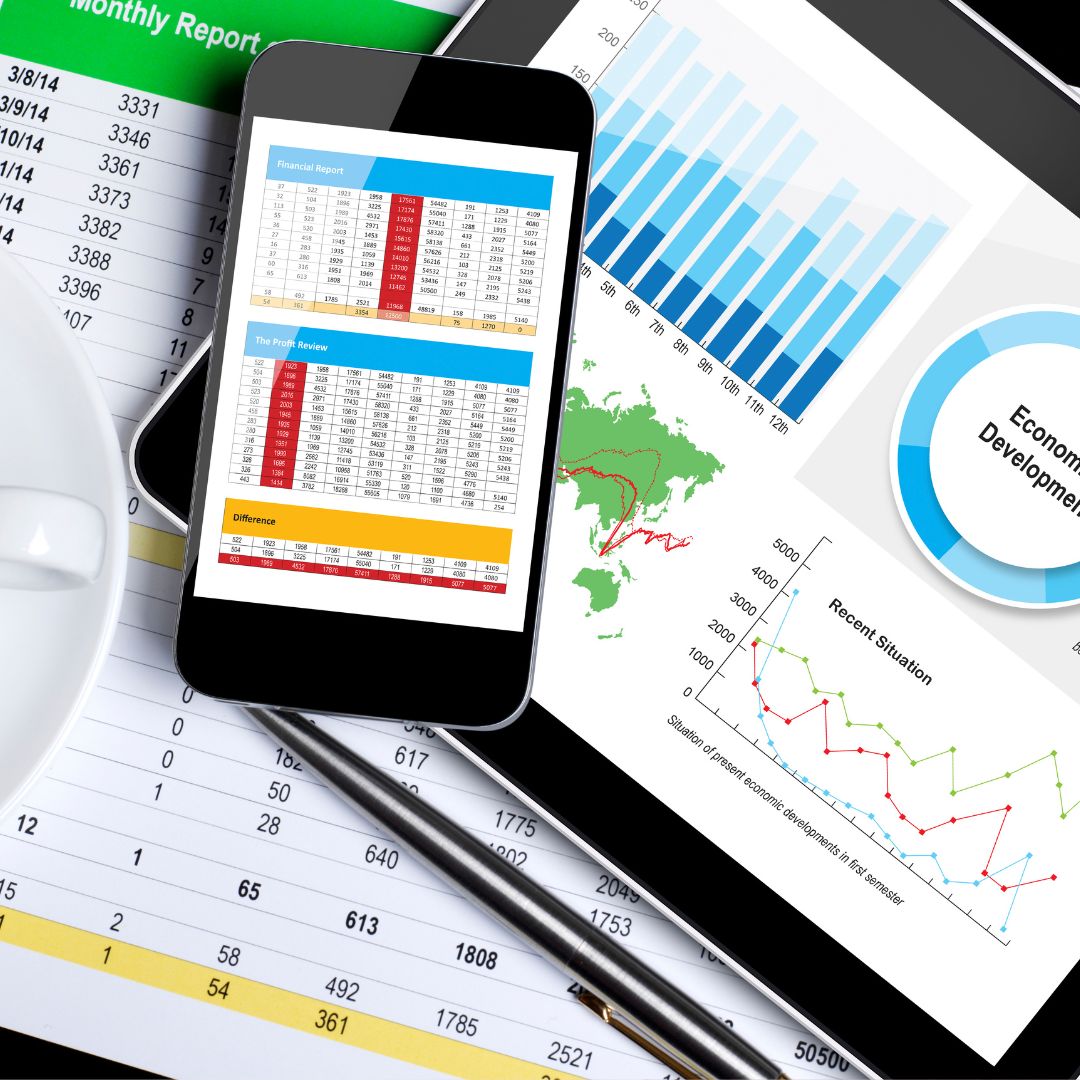As a business owner, understanding financial reports is crucial for making informed decisions, securing funding, and driving growth. Financial reports provide insight into the financial health of your business, help monitor performance, and ensure that you comply with regulatory requirements. Here’s an overview of the key financial reports every business owner should know and how to use them to make informed business decisions.
1. Balance Sheet
The balance sheet is a snapshot of a company’s financial position at a specific point in time. It shows the company’s assets, liabilities, and equity. The balance sheet follows the basic accounting equation:
Assets = Liabilities + Shareholders' Equity
- Assets: Everything the business owns, including cash, accounts receivable, inventory, property, and equipment.
- Current assets are assets that can be converted into cash within a year (e.g., inventory, accounts receivable).
- Non-current assets are long-term investments, like real estate or equipment.
- Liabilities: The debts and obligations the business owes to others, such as loans, accounts payable, and accrued expenses.
- Current liabilities are debts due within one year (e.g., short-term loans, accounts payable).
- Non-current liabilities are long-term obligations (e.g., long-term loans, bonds payable).
- Equity: The owner’s share of the business after all liabilities are deducted from assets. It includes retained earnings and capital invested by the owner or shareholders.
How to Use It: A balance sheet helps assess the financial stability and liquidity of your business. It shows how much the business owns versus what it owes and provides insight into your net worth. A strong balance sheet indicates financial health, while a weak one may signal over-leverage or poor cash flow management.

2. Income Statement (Profit and Loss Statement)
The income statement (also known as the profit and loss statement) summarizes the company’s revenues, expenses, and profits over a specific period, typically monthly, quarterly, or annually. It provides a detailed view of a business’s performance and profitability.
Components:
- Revenue: Income from the sale of goods or services.
- Cost of Goods Sold (COGS): Direct costs associated with producing the goods or services sold (e.g., raw materials, labor).
- Gross Profit: Revenue minus COGS. This shows how efficiently your business is producing or delivering its products.
- Operating Expenses: Indirect costs like rent, utilities, salaries, marketing, and administrative expenses.
- Operating Income: Gross profit minus operating expenses. This is the company’s core profitability.
- Other Income/Expenses: Non-operating income (e.g., investment income) or expenses (e.g., interest).
- Net Income: The final profit or loss after accounting for all revenues and expenses. If revenues exceed expenses, you have a profit; if expenses exceed revenue, you have a loss.
How to Use It: The income statement helps you track profitability and identify areas where expenses can be reduced or revenues can be increased. A consistent net profit indicates a healthy business, while frequent losses may suggest the need for cost management or revenue diversification.
3. Cash Flow Statement
The cash flow statement shows the movement of cash into and out of the business over a specific period. Unlike the income statement, which includes non-cash items like depreciation, the cash flow statement focuses solely on cash transactions. This report is critical for assessing your business’s liquidity and ability to meet short-term obligations.
Components:
- Operating Activities: Cash flows related to the core operations of the business, such as receipts from customers and payments to suppliers and employees.
- Investing Activities: Cash flows related to the purchase or sale of assets like equipment or investments.
- Financing Activities: Cash flows related to borrowing and repaying debt, issuing equity, or paying dividends.
How to Use It: The cash flow statement helps you understand how well your business generates cash to cover expenses. A positive cash flow ensures you can pay bills, reinvest in your business, and weather downturns. A negative cash flow can indicate potential liquidity problems and may require you to seek financing or restructure operations.
4. Statement of Changes in Equity
The statement of changes in equity (also called the statement of retained earnings) shows the movement in the owner’s equity over a period, detailing how profits are retained or distributed. It includes:
- Net Income: The profit earned during the period (from the income statement).
- Dividends Paid: Any distributions made to shareholders or owners.
- Additional Capital Investment: New capital invested by owners or shareholders.
- Other Adjustments: Changes due to factors like revaluations or correction of errors.
How to Use It: This report helps you understand the sources and uses of changes in equity, such as whether profits are being reinvested in the business or distributed as dividends. It’s especially useful for tracking the overall growth of shareholder value and assessing the long-term financial strategy.
5. Budget vs. Actual Report
The budget vs. actual report compares your business’s financial performance against its budgeted or forecasted figures. It highlights discrepancies between projected revenue, expenses, and profit, helping identify areas where your business is overperforming or underperforming.
How to Use It: This report is a tool for financial planning and control. By comparing actual results with the budget, you can adjust strategies, cut unnecessary expenses, or capitalize on unexpected gains. Consistent variances may suggest a need to refine your forecasting methods.

6. Key Financial Ratios
Financial ratios help assess the health of your business and provide insight into performance. Key ratios include:
- Liquidity Ratios: These measure your ability to meet short-term obligations, such as the current ratio (current assets divided by current liabilities).
- Profitability Ratios: These assess your ability to generate profit, such as net profit margin (net income divided by revenue).
- Leverage Ratios: These measure your debt levels, such as debt-to-equity ratio (total liabilities divided by equity).
- Efficiency Ratios: These measure how efficiently you use resources, such as inventory turnover (COGS divided by average inventory).
How to Use It: Ratios help monitor trends and pinpoint strengths and weaknesses in your financial performance. For example, a low current ratio may indicate liquidity issues, while a high debt-to-equity ratio may signal over-reliance on borrowed funds.
7. Understanding Financial Reporting Software
Financial reporting software, such as QuickBooks, Xero, or FreshBooks, can help automate the creation of these reports, making it easier to track and analyze financial data. These tools often provide built-in templates, integrate with other business systems, and can generate real-time reports, giving you a clearer picture of your business’s finances.
How to Use It: Implementing financial reporting software can save time, reduce errors, and provide up-to-date financial insights that allow you to make informed decisions quickly.
Conclusion
As a business owner, understanding your financial reports is essential for managing your company’s finances, making informed decisions, and achieving long-term success. By regularly reviewing the balance sheet, income statement, cash flow statement, and other financial documents, you can better assess the financial health of your business, identify areas for improvement, and plan for future growth. Utilizing financial ratios and advanced software tools further enhances your ability to make data-driven decisions, ensuring that your business remains on track for financial success.



